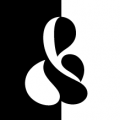Searching for best fonts with this kind of kink

Vasil Stanev
Posts: 787

Please list your favorites if you can think of any.
1
Comments
-
I am not sure if this helps you, but the picture of your /L reminded me of the /L of Euler Symbol, (see the eus* fonts at CTAN):
 1
1 -
are you taking about ink traps?3
-
What Chris asked.0
-
I mean this specific artsy way the letterform gets distorted to accomodate the inktrap.
1 -
@Vasil Stanev Ah, OK. I would say at that point the trap is a stylistic feature (so is not actually "accommodated") versus trapping anything. It would be nice to have a term for that. "Gratuitrap"? ;-)1
-
If I understand correctly what @Vasil Stanev is saying, it is that the ink trap is integrated into the letterform in an unusual way: the letterform is actually designed differently to have a nice smooth ink trap, rather than the ink trap being an added tweak at the end. I concur with this.
This is certainly consistent with Hrant’s comment that it is intended to be a style feature rather than to actually function as an ink trap (or anything similar), but I for one am not so… certain of the designer’s intent. 2
2 -
Borrowing a term from Bringhurst, I might call that an "adnate trap". Although that doesn't convey any potential gratuitous aspect.2
-
I think the example you posted may not work physically as intended as inktraps do because it does look like it was for stylistic reasons. However I tend to design corners and tapered terminals by slightly bevelling it(inline chamfer if you wanna call it that) like what's done in the example. So if you're asking what specific problems were solved doing this then reason I do it is because if you kinda scale down those corners or terminals it fills up that space or smoothens it out without weird aliasing happening atleast on screen. In print it kinda works too unless you start to scale it down more than you should. Shortly put for display faces it works at acceptable small sizes. It tends to render better instead of curves in my opinion. Why? I don't know, but it does.
I haven't done extensive research or anything on the matter but I just know when it looks right and when it doesn't, rounded corners look weird at smaller sizes. Another thing is wrt to L or any glyph with cross strokes ( like say X or K, etc) or connecting strokes, if you want it to match when it transitions to the connecting stroke like i"ve outlined [here in green], adding a chamfer like that helps to get a smooth transition and one which looks like its connected. We already do this with letters like /X, where we offset the strokes so they appear aligned? Similar approach. Also if you want the glyph to show off the deeper cut/corner, adding a chamfer helps intensify it.2 -
Perhaps the floriated initials on this kind of map would explain better. I am not after the inktrap that much, more afer this specific type of calligraphic "L" with a lower left kink, if "kink" is the correct term. Sorry if I unintentionally lead you astray.
 1
1 -
Ah. "Reflexed"?0
-
What you circled draws our attention to the inktrap. Do you mean the way it dips bottom left on the leg and moves away from the baseline to the top right and one which has an inktrap? Yeah no idea, sorry. There's some that have a similar looking L but the leg is either on the baseline or below it, not away and top right specially for something that has an upright stem.Vasil Stanev said:Perhaps the floriated initials on this kind of map would explain better. I am not after the inktrap that much, more afer this specific type of calligraphic "L" with a lower left kink, if "kink" is the correct term. Sorry if I unintentionally lead you astray. 0
0
Categories
- All Categories
- 46 Introductions
- 3.9K Typeface Design
- 487 Type Design Critiques
- 564 Type Design Software
- 1.1K Type Design Technique & Theory
- 656 Type Business
- 861 Font Technology
- 29 Punchcutting
- 520 Typography
- 119 Type Education
- 324 Type History
- 77 Type Resources
- 112 Lettering and Calligraphy
- 33 Lettering Critiques
- 79 Lettering Technique & Theory
- 558 Announcements
- 94 Events
- 114 Job Postings
- 170 Type Releases
- 179 Miscellaneous News
- 276 About TypeDrawers
- 54 TypeDrawers Announcements
- 120 Suggestions and Bug Reports




